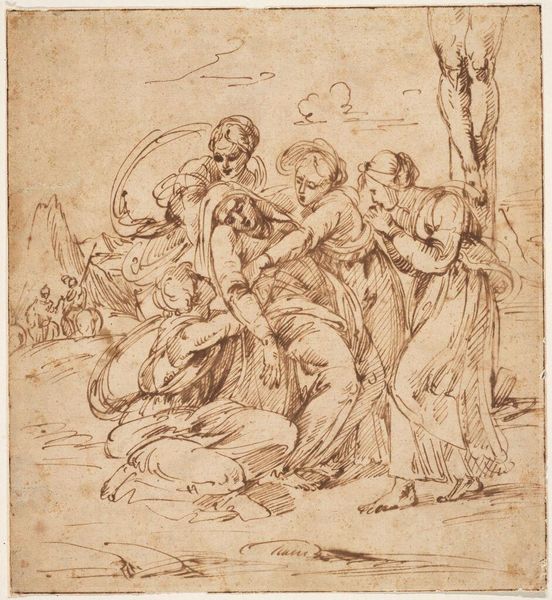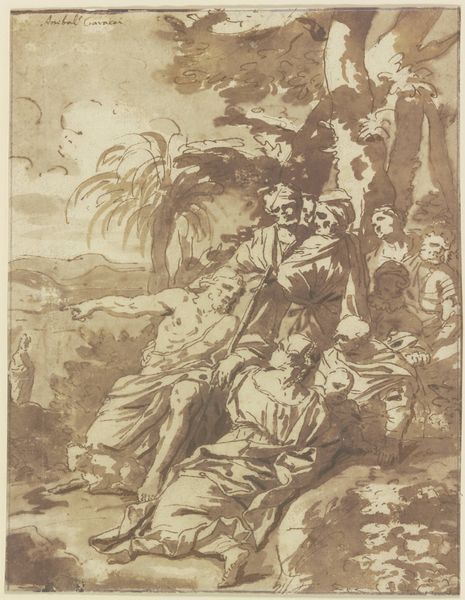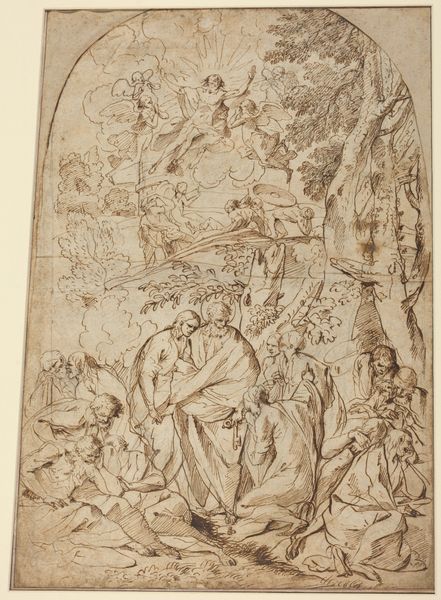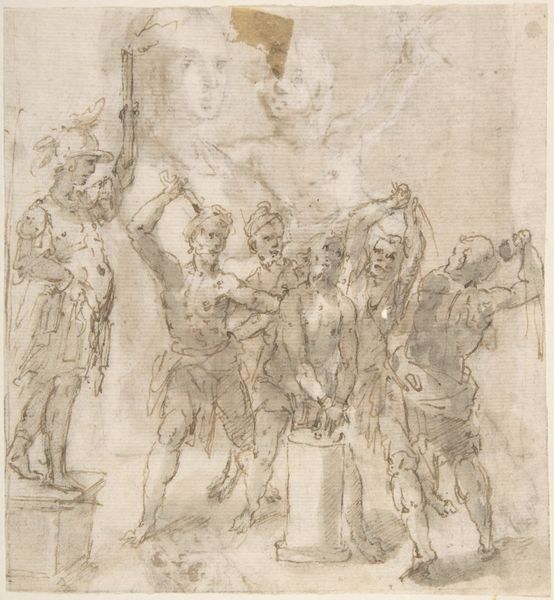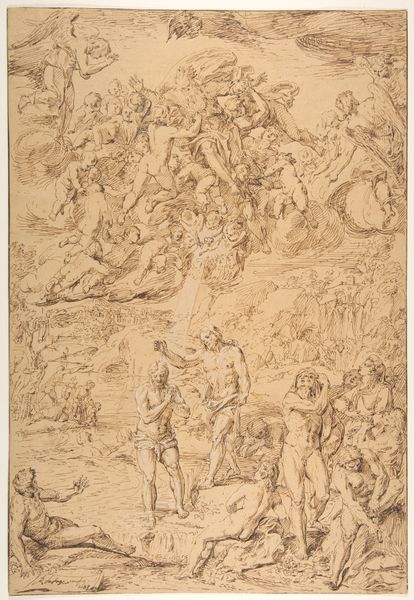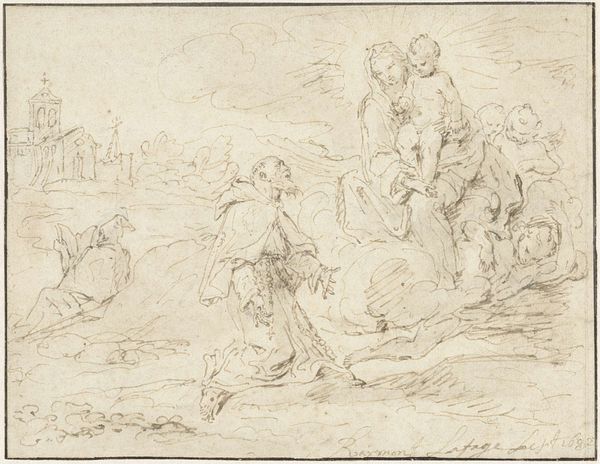
drawing, ink, pencil
#
drawing
#
ink drawing
#
baroque
#
figuration
#
ink
#
pencil
#
history-painting
Dimensions: height 208 mm, width 188 mm
Copyright: Rijks Museum: Open Domain
Editor: This is "Geboeide vrouwen," or "Bound Women," by Leonaert Bramer, likely created sometime in the mid-17th century. It’s a drawing made with ink and pencil. It strikes me as a rather somber and unsettling depiction. What do you see in this piece? Curator: I see a layered commentary on power, gender, and historical violence. Bramer's choice to depict women in captivity compels us to consider the socio-political dynamics at play during the Baroque period, when patriarchal structures often resulted in the marginalization and oppression of women. Notice how the composition positions the women centrally, yet passively, while the armed figures on horseback observe. What statement do you think Bramer makes about the role of women through this depiction? Editor: Perhaps he is highlighting their vulnerability? The way they're grouped together also makes them appear more of a collective, maybe suggesting a shared experience of suffering? Curator: Precisely. Their shared experience hints at broader historical traumas, forcing us to think critically about how women's bodies have historically become sites of control and conquest. Are there echoes of this theme that resonate with contemporary society? Editor: Sadly, yes. Thinking about ongoing global conflicts, and the continued subjugation and exploitation of women in various contexts, makes this drawing feel surprisingly relevant, despite being centuries old. Curator: It underscores the enduring power of art to provoke critical conversations about history and its impact on present-day power dynamics. Art becomes an act of bearing witness. What started as a question of aesthetics becomes one of justice. Editor: I hadn't considered how directly art could intersect with current social issues. I'll definitely look at art through a different lens now. Curator: I'm glad. Looking at the intersections of the artwork's historical background with the socio-cultural and political aspects offers a better comprehension.
Comments
No comments
Be the first to comment and join the conversation on the ultimate creative platform.


